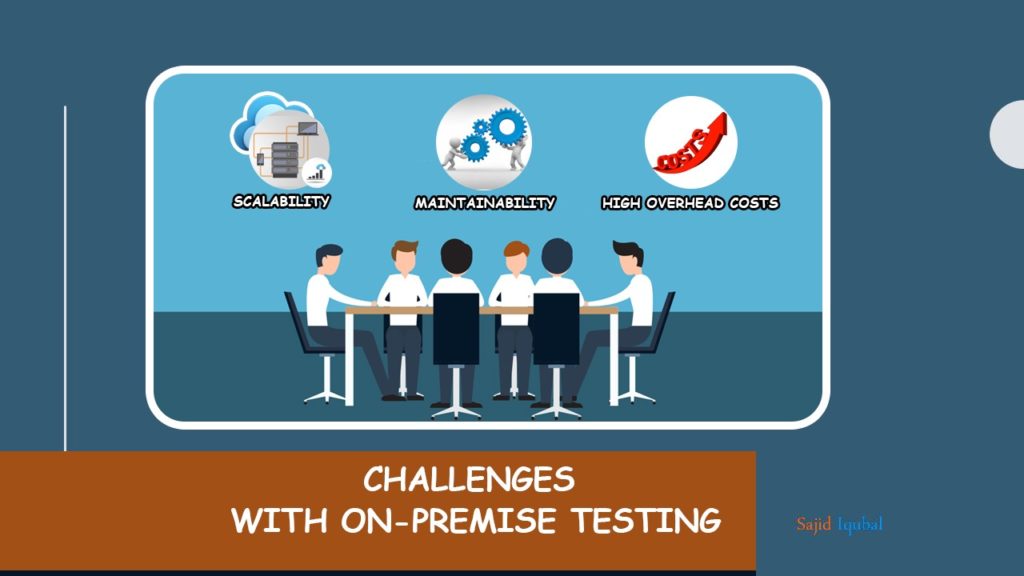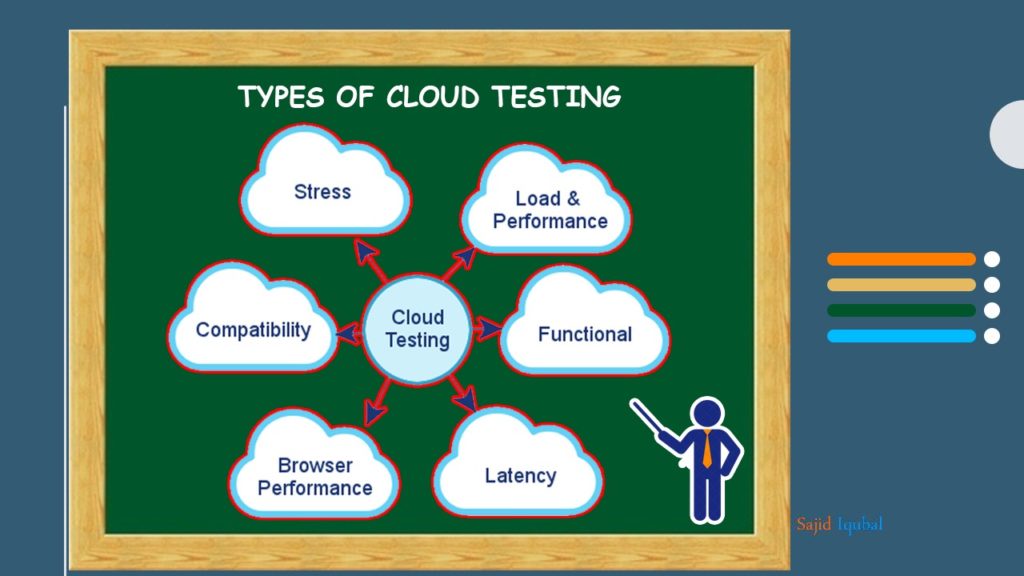Cloud-Based testing is a kind of software testing in which software applications are tested using cloud computing services. The purpose of cloud testing is to test software for functional as well as non-functional requirements using cloud computing that ensures rapid availability with scalability and flexibility to save time and cost for software testing.
Types of Cloud testing
Cloud / SaaS Oriented Testing: This testing is done by vendors who provide cloud services. It aims to ensure the quality of services offered in the cloud. Testing may include unit testing, regression testing, performance, and scalability evaluation.
Online based application testing on cloud: This test is aimed at online applications on the cloud with heavy traffic usage.
Cloud Testing Application Testing on the Cloud: This testing is to ensure quality after an application is implemented. The purpose of this test is to perform function validation, system-level integration, scalability measurement with various cloud technologies.

Other cloud test types:
Stress: Such a test is to ensure the degree of the endurance of the system, that is, the extent to which the system is capable of performing under extreme pressure. Simulators are used to create peak load conditions to perform stress tests.
Load: Load involves the creation of heavy traffic so that the system’s response to such load conditions can be analyzed.
Performance: From performance testing, we can analyze whether the system is capable of delivering the expected function, and also to verify how much it is capable of handling different loads.
Functional: This is according to the specifications required to test the system in the cloud space.
Compatibility: This test is for testing systems with different operating system environments. This can be done using cloud testing services.
Browser performance: Various browser platforms are used to check the compatibility of the application with the browser.
Latency: This is a measurement of latency between the subsequent action and the corresponding response to the system deployment in the cloud.
Cloud testing challenges
Cloud Service Challenge – The major issue in accessing cloud services is that organizations are trying to directly access cloud services rather than local storage. A cloud service should ideally be a local service compared to a remote service. To assure timely delivery of services, cloud service assurance is also another issue.

Security challenge – In cloud testing, data is transferred over the Internet, so it is prone to security attacks, so testers must ensure extreme security to protect the data from leakage.
Layered Testing Challenge – This challenge is for dealing with different layers of the cloud environment. This cloud testing consists of several layers within it such as database, server performance, network connection, and software application testing. The second challenge lies in the fact that how communication between layers is maintained. Testers are required to test communication between the layers and to check if any risks are involved.
Lack of universal standards and limited infrastructure – Lack of standardized way of accessing or applying to public cloud services. Each cloud service provider has its operating models, architecture, and pricing mechanism. Therefore it is a problem when a company wants to switch from one vendor to another.
Gain knowledge, guidance, and staff expertise – Lack of expertise in using cloud testing services. Vendors providing cloud service may not have the necessary staff to provide training. Therefore it is a challenge to implement cloud testing without proper knowledge.
Providing cloud services on an on-demand basis – Providing on-demand services is a challenge in itself as it involves cost and volume issues. These cost issues are due to fluctuations in costs that are associated with incremental cloud services. The second type of challenge is reliance on remotely installed applications. In the case of applications being installed remotely, it is sometimes difficult to establish the same pattern of environment.
Objectives of cloud testing:
- The main objective of cloud testing is to ensure the quality of cloud-based applications by assessing their business processes, functional services, and system performance.
- Analyzing software applications in a cloud-based environment about their security, performance, scalability, and measurement in terms of economy.
- To test the services offered by the cloud environment.
- To test compatibility between software applications and different cloud-based components, to ascertain their interoperability.
Conclusion
Cloud-based testing allows organizations to significantly reduce their cost and time for software testing, but it also includes some challenges that must be considered before deploying your software to the cloud.